A single movie. A single architect. A single belly. One million parallels. One million questions opened. Art as such.
“I had an idea as new as it was bold – to create buildings that would leave an impression as if they were buried.” – Étienne-Louis Boullée
Peter Greenaway had a less revolutionary idea, one must admit. The Belly of an Architect, his 1987. motion picture, was preserved on my computer for about five years. Within the “Art” folder, right alongside “Yearning For Life”, “Klimt”, “Nightwatch”, “Modillani”, “Frida”…At one point I tried watching it, which lasted for a approximately 30 minutes…to no avail. I chucked it into a “Peter Greenaway” folder next to a few more of his accomplishments, realizing this was not a movie about some artist or art itself, but rather a sheer pointless tedium that I might just watch some day if I decide to test the limits of my patience. And I did love his movies, right up to that day. I appreciated his intellect. In those 30 minutes he truly disappointed. What on Earth possessed him to direct such a monstrosity…
At that very moment of my supreme foolishness, I was at my first year of architecture studies so, logically, I was resolved to elevate my fields of interests from painting to this new direction. “Give me all the movies on architecture!” That’s how that one roamed in.
But then I grew up a little, brought my studies to an end and, whilst maintaining my computer, I stumbled upon him again. With no small toil I forced myself to, this time, watch the movie until it’s over, as I have turned into something of a movie aficionado and have never really left a single movie languish semi-watched.
“Just so after I’m done I could erase it from computer and my head, with clear conscience.” I though, a little smarter but no less naive.
I do not know just how many people like walking through the city streets alone, all by themselves, when there are no crowds. When it’s dawning and skies are still undefined, when shadows are peculiar and it is silent. I do, because I feel some kind of apocalyptic sensation in the air. I don’t know why I put it that way. It is not about that cheesy joy, another day being born and so on – it is some kind of terrifying wasteland. It is that moment when one, with each and every part, senses glory in being small, so much that it scares. On the other hand is this euphoria for simply being there. You are alive and you feel it. Omnipotence within some intimate microcosm.
It is the same when it rains, and the skies are so infernally threatening and heavy. When all the others are rushing somewhere, running away, and you don’t care if you get soaked or not, as everything is so beautiful.
Therefore, I watched the movie. Erase it, I did not. Why – no idea. Months later, during one of such walks, I submerge myself in some of those oddly inspiring sights when sort of a flashback hits me! The movie, by all means. Completely randomly, *something* related to that movie just flashes through my mind??? No clue as to what was that all about, but suddenly I find myself recommending it to everyone. Subconsciously, I have high hopes that someone may explain to me just what is happening there…No answers. I linked some emotion with movie’s score that really made an impact when I was watching it. And songs can lift me up big time. That must be it!
There was a stroke of luck, soon after (few long years later) I was studying for an exam and doctorate studies of History of Arts (of architecture). Learning about certain theories of 18th, 19th and 20th century architecture from all over the world…France and the name of Étienne-Louis Boullée came up. Why is this familiar? I keep reading and soon find myself, lightly put, shell-shocked. With every sentence that followed, that damned movie begins to unfold within my mind, very slowly, and right then and there I understand! In a matter of seconds.
Peter Greenaway is one bloody genius! And he knows it. But how do I put this? And has anyone put it already? Let’s assume he/she did. For months I’ve been skimming through critiques and reviews of his movies and it’s all nice and great but THIS movie undeservingly found itself in a grey mass of mediocrity, accompanied by banal epithets: “not visually inventive” + “not bold enough” + “thematically unprovocative” + “unclear” + “endearing”…
Endearing, wow…the movie is BRUTAL! One single “flaw” that I would grant it is the limited circle of people who can enjoy it thoroughly…but, since when is art made for commercial purposes anyway?
To fully comprehend “The Belly of an Architect”, it is not sufficient to merely classify it into chronological string of Greenaway’s movie fruitions. It is not necessary to be acquainted with the art of film only, and analyze it from that one aspect. What is really needed is to know Boullée of whom the movie speaks in such refined manner. The title itself implies that it is regarding ONE particular architect’s belly. Each and every review begins with mentioning the “main” protagonist, Stourley Kracklite. It is not about him. Stourley is an illustration, a passing illustration. Not any more important than carefully selected long frames of the movie. Just like the character of Louisa, the young Mrc Kracklite – from Stourley’s standpoint – is an illustration. Passing and irrelevant. The movie’s plot is revolving around him, his job, his marriage…but all that is portrayed with astonishing irrelevance compared to his obsession – his stomach. Greenaway made a movie with some characters in it, but all of them are portrayed with astonishing irrelevance compared to his obsession – the arts. In this particular case – architecture. I wasn’t sufficiently idle to do it, but I am pretty sure that if you put on paper all the minutes in which architecture makes an appearance on screen it would outnumber the living characters. So how can you just go on and describe this movie with “Kracklite is an architect who arrives in Rome with his young wife in order to hold an exhibition. His stay in Rome…” I tried watching it like that for half an hour, like I already said.
Movie’s main protagonist is architecture. The movie is in fact an ode to the art of architecture. If that had indeed been Mr Greenaway’s initial idea, I simply cannot think of any architect more fitting than Étienne-Louis Boullée. Kudos to Peter’s intellect!
Who was Étienne-Louis Boullée for the history of architecture?
The architect who was building until he was 54. Successfully, might I add. Numerous house projects were saved, testifying that his career was all but insignificant. The most esteemed names in history are actually of those who created official, state objects. Boullée had that chance in his 52nd year of life…and soon abandoned all work in the field of architecture. Seemingly for no reason. If we would to draw the line there – Boullée would be of little significance in history of art. What is much more notable when speaking about this author is his visionary drawings that were preserved.
Boullée’s cessation of working in architecture can be justified with belated middle age crisis; however, it is now known that all his life he yearned to become a painter. That is what he studied at first, but he went awry pressed by his father’s wishes to follow his foot-steps, so that for 30 years he was fulfilling his father’s desire. And yet still, once he broke off with architecture, he did not return to painting – he became an architect-visionary.
Peter Greenaway graduated in painting. Today he is best known as a movie director but he still enrolls in writing and painting.
Étienne-Louis Boullée is also mentioned as a capable writer and draftsman. Beside that, he displayed exceptional interest for theories within domain of vividness and sublimity, holding that the base purpose of architecture – is to depict an expressive picture. With Greenaway, is it the artfulness of movie frames? The expressiveness of pictures?
For Boullée, architecture was not a question of lifting a 3D construction but of evoking of 2D sights, evoking of visual poetry that will awaken feelings that pervade our bodies, our feelings and our consciousness.
When I tried to pull out movie’s stills to serve as illustrations of this article, I realized it would be a mission impossible; as well as that the movie could easily be translated into a form of a book. A picture-book. Frame by frame, thanks to the static camerawork. And as we can see, it is no coincidence. The movie does not stray into three-dimensionality with any movement whatsoever. A simple toggling of pictures. Slow. Two dimensions and…? Nothing else?
“The strongest shapes can cause specific sensations, and those shapes were “scientifically” enumerated by Boullée. The strongest shapes are those elementary: pyramid, cube, cylinder, cone and especially sphere.” – Miloš R. Perović (“The roots of modernism”)
„Dear Etienne-Louis Boullée, the pains are returning, and I can’t eat without vomiting. Some days it’s spherical, some days it feels like a cube. Most days it feels like a sharp-cornered pyramid.“ (Stourley Kracklite, The Belly of an Architect)
Boullée deemed that the strongest impression of the strongest shapes listed above is evoked by – shadows. Shadows that simple shapes cast on vast planes deprived of decoration. Even further – he deemed himself a founder of “architecture of shadows” and ended up claiming that the most effective mediums of architecture are not three-dimensional forms nor their two-dimensional pictures but – illusory shapes of darkness created by those pictures. In his drawings he managed to accomplish light-dark effects with darkened skies obscured by clouds and bright lateral lighting.
In “The Belly of an Architect” there is not a single frame in which sky is clear or sunny. The Sun either rises or is setting, it is not cloudy but it is blurred and shadows are, with no exception, sharp and prominent. Also, the wind constantly breezes, which is visible in every scene that takes part in closed interiors because the curtains are fluttering, again with no exception. Melodramatic mood, a trademark of each Boullée’s vision, is also the subtle groundwork for entire movie.
In his visions, Boullée’s melodrama is underlined with depictions teeming with people or, if anything, with displays of lonely human figure, dwarfed next to an oversized object.
Greenaway is consistent to that. In scenes dominated by architecture of ancient Rome there is rarely any human in sight, and when showing Kracklite, he is merely a tiny, miniature figure opposed to grand, magnificent scale of surrounding architecture.
Those frames during which we wait patiently until someone climbs or goes down the stairways – Boullée, on his cenotaph projects of theatrical dimensons, evoked by strings of ant-sized people who seem to climb the endless streak of stairway to heaven.
Fifteen minutes into the movie, Piranesi is already mentioned, in what seems to be a facultative chit-chat, a small talk. Boullée is often regarded as a French Piranesi – he did not build much, but he did leave behind unbuilt two-dimensional visions that have had a huge impact and influence. Piranesi’s melancholic visions of ancient architecture gained new strength with Boullée’s Neoclassical style.
The Italian cemetery can be seen during movie’s first scenes, when the train is taking the Kracklite couple to Rome. Upon his first meeting with colleagues from Italy, Stourley is asking to be taken to Augustus’ grave. Both scenes have another psychological dimension to them, but are also important as a portrayal of Boullée’s preoccupation with tombstones. Now let us return shortly to the quote from the beginning of this article and the notion of “buried buildings”. The pinnacle of his mortuary architecture was 1783’s cenotaph to Newton. Boullée was obsessed with strict and austere geometric shapes rife with enormous energy of symbolics. Symbol of Newton on one pound bill is present throughout the movie.
„In fixing us firmly on the earth he enables us with equanimity to keep our head in the clouds. If you look carefully, you can spot a reference to gravity.“ is what Kracklite had spoken, and in a matter of minutes a shot of a one pound bill caught in flames is attached to his statement. Right after arrival in Rome. Just as it did happen – with gravitation swayed, not even his head could float on clouds with such stability, on the contrary. The movie’s finale, with Kracklite committing suicide whilst holding the same pound bill, then a close-up on Newton…the man wants his gravity and stable head back, right?
I would concur with evaluation of this movie as Greenaway’s most ambitious in terms of psychology. Still there is time for him to exceed himself, but…
“0 Newton! With the range of your intelligence and the sublime nature of your Genius, you have defined the shape of the earth; I have conceived the idea of enveloping you with your discovery. That is as it were to envelop you in your own self. How can I find outside you anything worthy of you? It was these ideas that made me want to make the sepulchre in the shape of the earth. In imitation of the ancients and to pay homage to you I have surrounded it with flowers and cypress trees” – Étienne-Louis Boullée
„Now, I doubt whether Sir Isaac Newton has ever before been celebrated…with sugar icing.“ – Stourley Kracklite
Since we have now disassembled the context of en entire movie, we finally reach the ongoing questions. Sugar icing or the art today. The motive of a COPY, so vigorous in the movie and so multifaceted. A current, up-to-date artist with his uncanny barrows of lard around his waist, photographing mercilessly and copying, copying, coping the stoney and perfect abdomens of Italian sculptures. All along convinced that he suffers from cancer located in that very belly. He dies slowly and then decides, unilaterally and waywardly, to end it all. Can this be symbolic of history of art, ever since 18th century and onwards?
The age of historism, historicism, the birth of neo- styles by copying and translating antique into Renaissance, Renaissance into Neoclassicism, Neoclassicism into Modernity. Consequently, we move from Baroque to Deconstructionism. And this is not Peter Greenaway’s first movie whose artfulness carries intense reminiscence of Baroque. Deconstructionism as conscious and deliberate suicide of art itself?
No hope? Wrong! We return to the scene from movie’s opening minutes, during which train enters Italy and shots of cemetery are intertwined with scenes of sex in train. Some lives extinguished long ago and another life just conceived. The belly. As the movie unfolds, in parallel with that, a life grows in one belly, and in the other – sickness. And in the end, Kracklite’s heir is born while he himself, with the help of gravity and Newton, hurdles towards death. Or freedom, or history.
What came first: art or artist?
Movie’s chief beauty (and also its chief problem, for it is all about parallels and extremes) is in opening countless seminal questions on art, whose answers were an object of artists’ pursuit since always.
Creation and destruction have always gone hand in hand and Greenaway confirms it in picturesque way (my gratitude to him).
Étienne-Louis Boullée belonged to a dark side of Romantic movement. His imagination was relentless and unrestrained by limitations of constructional demands in architectural tradition, and it is that imagination’s freedom that was barely ever reached again in history of architecture. What is ironic is that it was precisely him, such as he was, that became an architectural standard in totalitarian regimes. He was a role-model to accomplishments of Albert Speer who was building and constructing during political terror of Third Reich. This fact is mentioned in one of movie’s dialogues and during long frames, the icon of fascist’s architecture in Rome is shown – The Square Colosseum, initiated by Benito Mussolini.
And as a finale, the supreme brutality – Kracklite’s adversary throughout the entire story, Caspasian, a crystal clear symbol of capitalism. At the beginning, he was only involved with the financial aspect of exhibition and then, slowly, he took complete control of Kracklite’s spouse and then the job. On the peak of this paranoia, Kracklite kills himself, while little Kracklite-heir is born under the patronage of that same Caspasian…What Peter shrewdly (and brutally) seems to infer is that against this new order – battle is futile. Either accept it or jump off the window, there is no third option…or rather, there is – make a movie out of it!
Gyroscope snaps.
For P.U.L.S.E World: Skineta Splajn

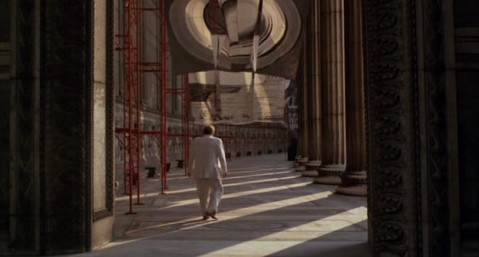
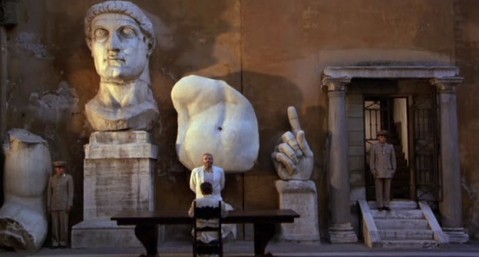
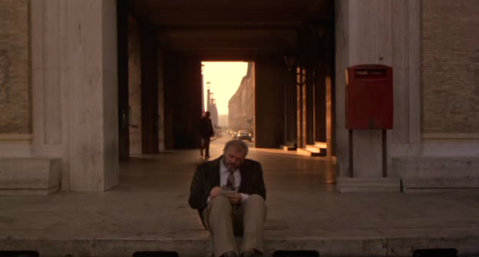
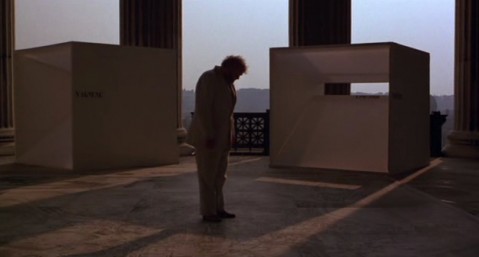
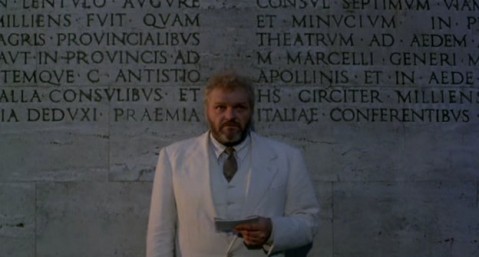
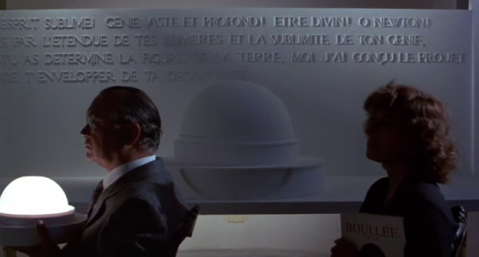
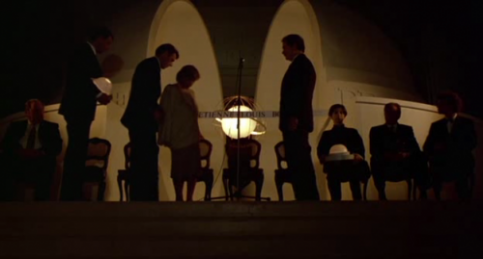
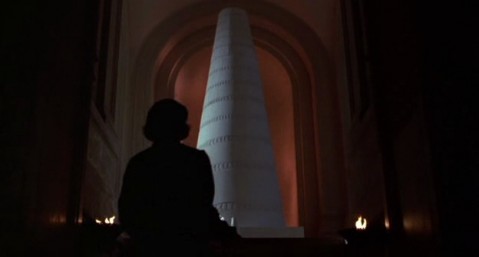
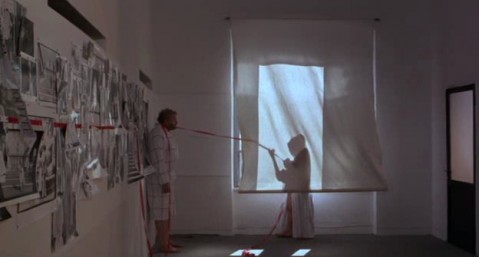
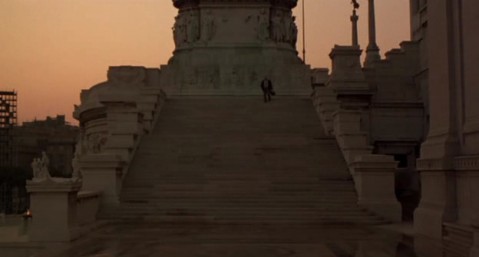
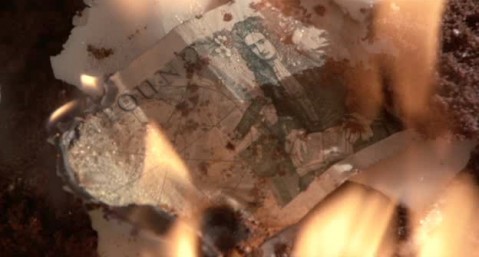
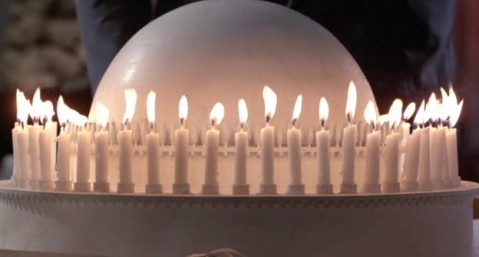
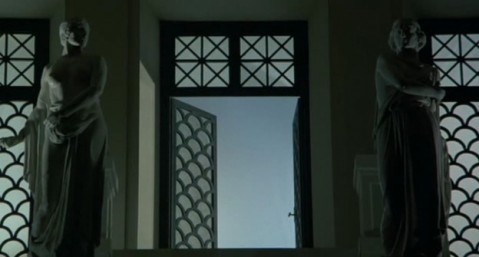
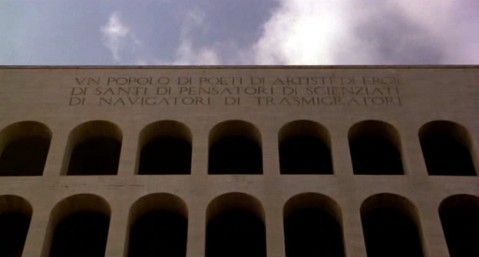
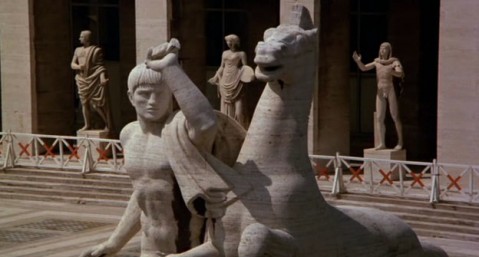
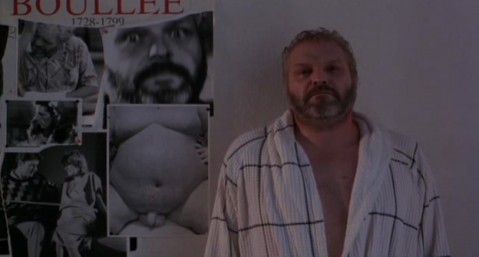
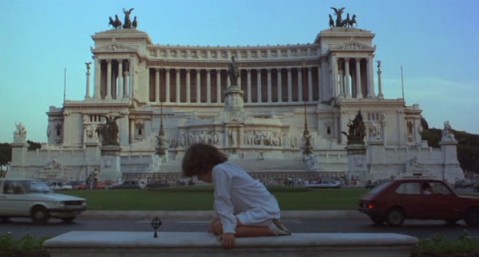
You must be logged in to post a comment Login